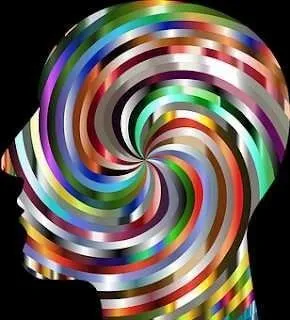Schizophrenia is a psychiatric disorder characterized by a peralal on the perceptions, thoughts, emotions, attitudes, and behavior of a person. Schizophrenia is a mental disorder characterized by impaired thinking processes and weak emotional responses.
This situation is generally manifested in the form of hallucinations, paranoia, false beliefs or thoughts that are incompatible with the real world and built on elements that are not based on logic, and accompanied by significant social and work dysfunction. The diagnosis is based on the observed behavior and experience of the patient reported.


The symptoms that appear in patients can be divided into two groups, namely positive symptoms and negative symptoms. Positive symptoms include delusions (serious misunderstanding of what is happening, irrational, and unrealistic), hallucinations, mind-chaos, noise, anxiety, strange behavior, and hostility. Negative symptoms, such as withdrawal from intercourse, quiet, difficult to talk, passive, apathetic, difficulty thinking, and loss of will or initiative.
Schizophrenia is at risk of increasing substance abuse, especially dependence on nicotine, suicide, and deviant behavior. This disorder is almost 100 suffered by the adult population, especially late adolescence or early adulthood. In men usually occur at the age of 15-25 years, while in Women about 25-35 years.
Schizophrenia is thought to be caused by several things, namely:
- Genetic factors
Disease Schizophrenia is controlled by several genes at different loci across its chromosomes. Based on the research, the percentage risk of schizophrenia will be lowered from the parent is about 7-160 / 0 if one parent as the patient, and 40-68% if both parents are sufferers.
Symptoms
Symptom characteristics: Two or more of the following symptoms, each present with frequent frequencies over a period of one month (or less, if symptoms are reduced due to treatment).
Shares of irregular speech, which is a manifestation of a disorder of formal thought. Roughly disorganized behavior (eg inappropriate dressing, frequent crying) or catatonic behavior Negative symptoms: Blunt emotions (lacking or refusing to respond emotionally), alogia (lacking or refusing to speak), or Avoid or deny motivation) If the grading is considered weird, or hallucinations include hearing one vote participating in continuous comments on the patient's actions or hearing two or more voices talking to each other, only the above symptoms are required. Irregular speech criteria are only met if it is severe enough to interrupt communication substantially.
- Biochemical factors
Includes chemical imbalance (neurotransmitters) of the brain, excessive dopamine neurotransmitter activity in certain parts of the brain, as well as abnormal sensitivity to dopamine and other neurotransmitters such as serotonin and norepinephrine. '
- Psychosocial factors
Covering the trauma psychiatric, parental-child-related relationships (an unhealthy lifestyle such as children should be subject to overdone, over-protective, or overly harsh discipline), as well as pathogenic interactions in the family. The term "schizophregenic mother" is sometimes used to describe a mother who has a cold, dominant, and repulsive nature that is thought to be the cause of schizophrenia in her children.
- Symptoms
Symptom characteristics: Two or more of the following symptoms, each present with frequent frequencies over a period of one month (or less, if symptoms are reduced due to treatment).
Irregular speech, which is a manifestation of a formal mind disorder.
Hallucinations.
Rude irregular behavior (eg inappropriate dressing, frequent crying) or catatonic behavior.
Negative symptoms: Emotional emergence (lacking or refusing to give an emotional response), alogia (lacking or refusing to speak), or avoiding (lacking or rejecting motivation).
if the supposition is considered strange, or hallucinations include hearing one vote participating in continuous comments on the patient's actions or hearing two or more voices talking to each other, only the above symptoms are necessary. Irregular speech criteria are only met if it is severe enough to interrupt communication substantially.
Social or occupational dysfunction:During a significant time since the onset of the disorder, one or more functional areas such as work, interpersonal relationships, or self-care, become very low compared to levels achieved before the disturbance.
Significant duration: Signs of continuous disturbance persist for at least six months. This six-month period should include at least one month of symptoms (or less, if symptoms are reduced by treatment).
If signs of the disorder are seen for more than a month but less than six months, the diagnosis of schizophreniform disorder is applied. Psychotic symptoms that last for less than a month can be diagnosed as brief psychotic disorders, and various conditions may be classified as other unspecified psychotic disorders.
Schizophrenia can not be diagnosed if symptoms of mood disorder are present substantially (although diagnostic disorder may be diagnosed), or if symptoms of pervasive developmental disorder are present unless prominent or prominent hallucinations are present, or if symptoms are direct physiological outcomes of a medical condition or substance general, such as drug abuse or treatment.
Treatment
Leading treatment is a treatment with antipsychotics that generally suppress the activity of dopamine (and sometimes serotonin). Psychotherapy and vocational and social rehabilitation are also important treatments.
In more serious cases involving risks for themselves and others, it is necessary to have forced hospitalization, although the length of hospital care is shorter and less frequent.